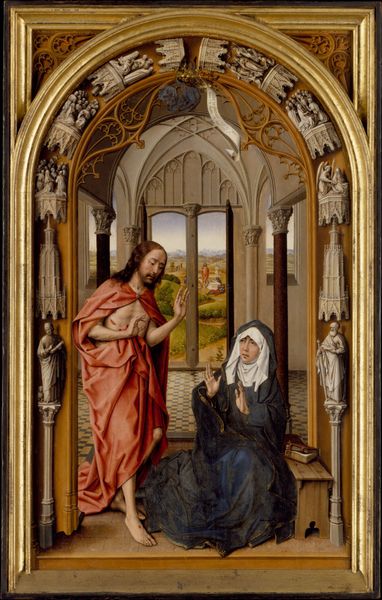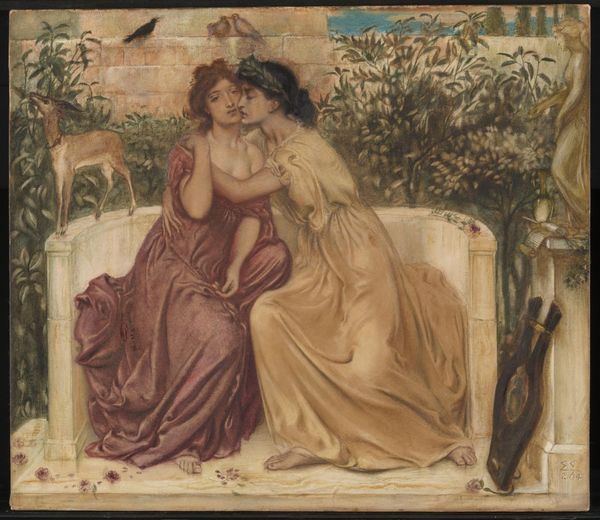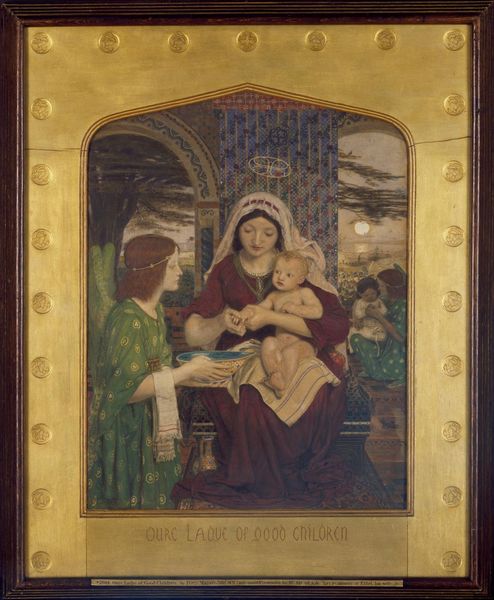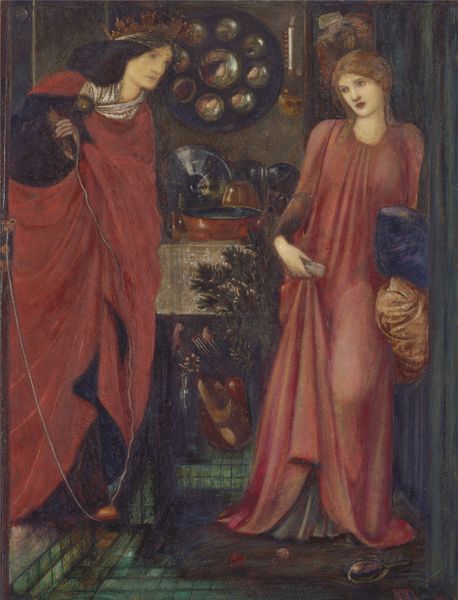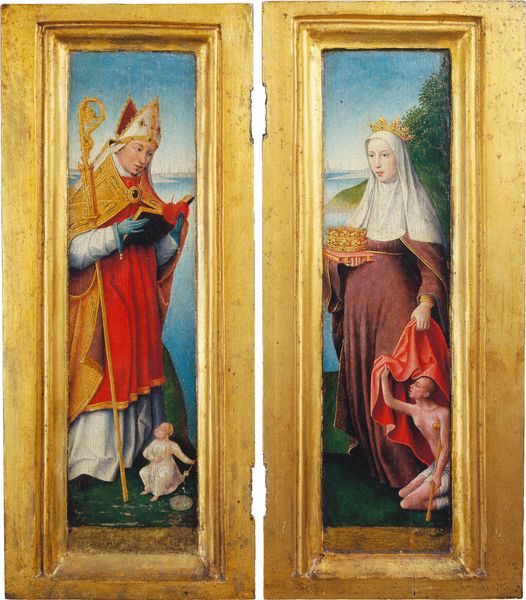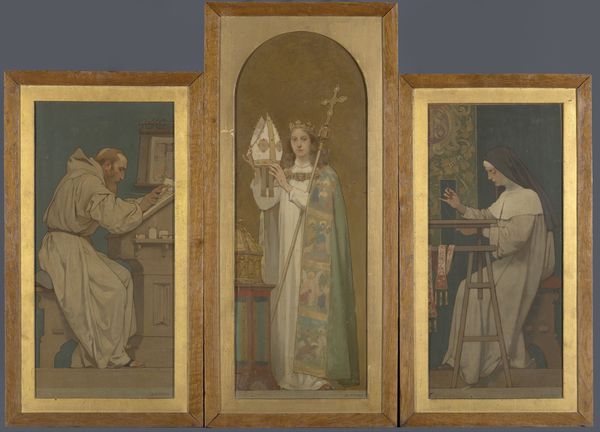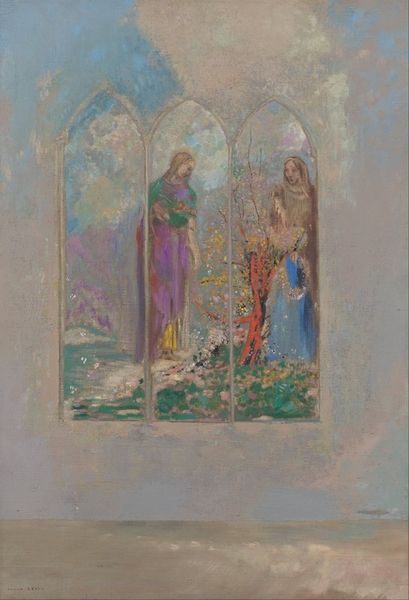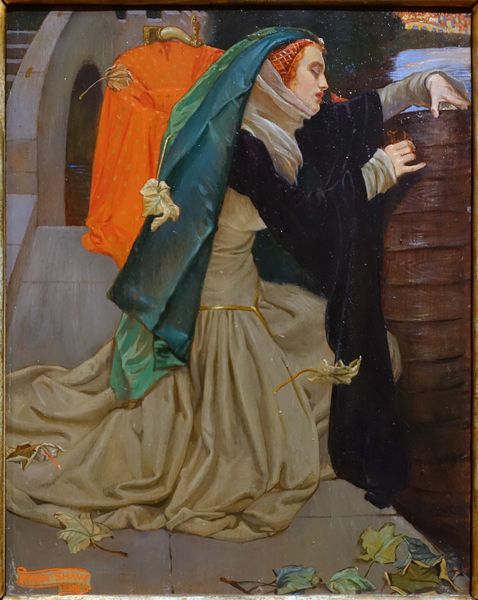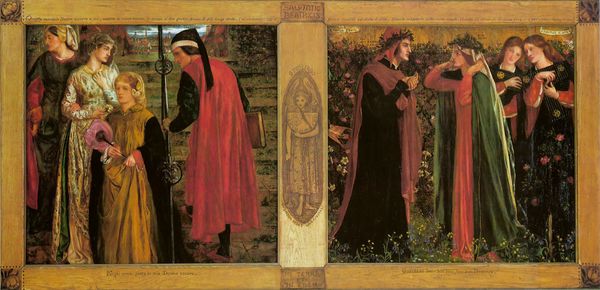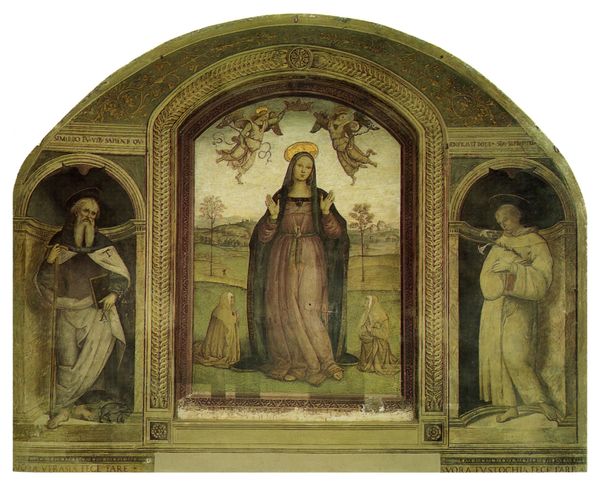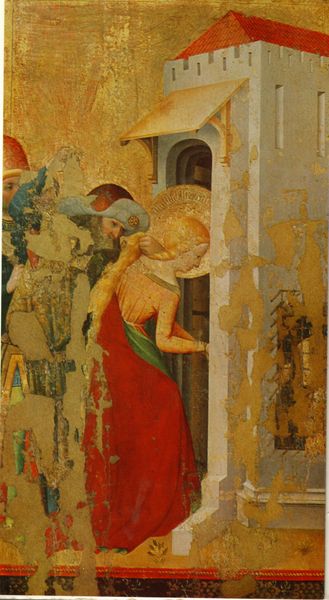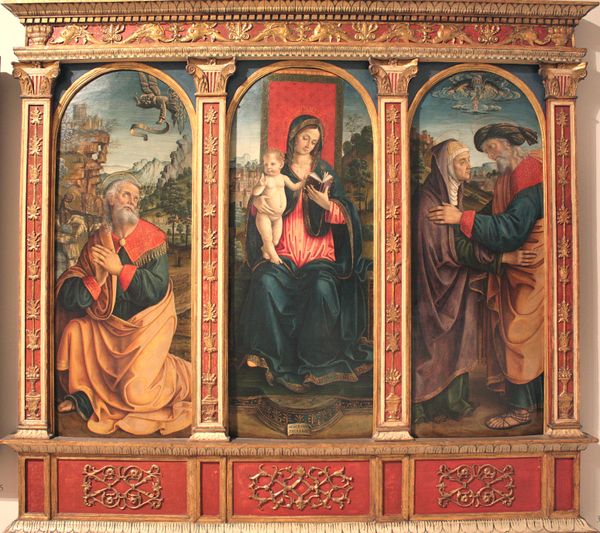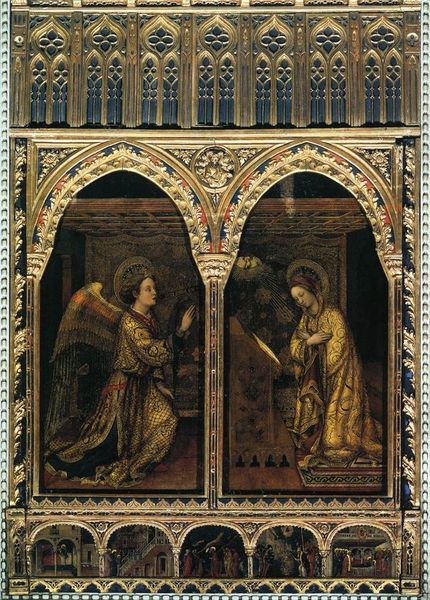
painting, watercolor, impasto
#
portrait
#
water colours
#
narrative-art
#
painting
#
figuration
#
oil painting
#
watercolor
#
impasto
#
christianity
#
symbolism
#
pre-raphaelites
#
virgin-mary
#
watercolor
#
angel
Dimensions: 61.3 x 35.9 cm
Copyright: Public domain
Curator: Here we have Arthur Hughes' watercolor titled "The Annunciation," which can be found here at the Birmingham Museum and Art Gallery. It was purchased by the gallery in 1891. Editor: Well, right away, the chromatic restraint strikes me. It feels muted, almost dreamlike, with those gentle washes of lavender and cream. Curator: Indeed, Hughes departs from strict realism, embracing a symbolic language evident in the angel's idealized features and Mary's posture. The Pre-Raphaelite influence is clear here in its fidelity to nature. Look at how precisely rendered the flowers and foliage are. This is very characteristic of their dedication to truth in representation. Editor: I appreciate your read, but I wonder how much that so-called "truth" caters to a male gaze that often idealizes and de-contextualizes women. Mary’s passivity, the angel's ethereal beauty—it all plays into a narrative where female agency is minimized, wouldn’t you agree? We cannot dismiss the politics inherent in its imagery. Consider how it reinforces patriarchal norms about female purity and obedience. Curator: I see your point. And while such issues about the subjugation of women and society are important, in purely formal terms, notice how Hughes uses the architectural frame within the painting. The gothic arch mimics the physical structure of the painting itself. Editor: Right, and thinking more about that architectural detail— the "domestic" space represented can also be considered through a socio-political lens, can't it? By placing the annunciation in such an environment, doesn't Hughes domesticate this pivotal moment, reducing Mary's role to a mere household affair, far from the world-changing implications of her acceptance? Curator: Your analysis broadens my appreciation of Hughes' work and reveals other interpretative possibilities. I originally tended to perceive more structural and aesthetic achievements within this painting. Editor: Likewise, reflecting upon the forms and compositional aspects you raised encourages an alternative reading in connection with broader cultural issues that persist today. I am grateful to you.
Comments
No comments
Be the first to comment and join the conversation on the ultimate creative platform.
